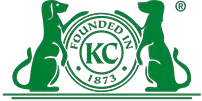Elk-a-Bee History
The Elk-a-Bee is a relatively recent hybrid, or designer, breed that was created in the 1990s by crossing the American Hairless Terrier (AHT) with the Australian Silky Terrier (AST). The Elk-a-Bee is a mixture of two purebred dogs, the American Hairless Terrier (AHT) and the Australian Silky Terrier (AST), that are related by parentage. The Elk-a-Bee is a fairly new hybrid, or designer, breed of dog that was invented by breeding an American Hairless Terrier (AHT) with a Australian Silky Terrier (AST). The first litter of puppies was born in the early 1990s and is credited with starting the fad for hairless terrier hybrids. The AHT is a medium-sized, long-haired, and mostly white or cream-colored dog. The AHT originated in Ohio in the early 1900s when a dog named Captain was crossed with a China terrier. The AHT was originally created to be a ratter, but is now primarily a companion animal. The AST is an even smaller, short-coated, and mostly black or silver colored dog. The AST is also a relatively new breed that was created by crossing a Yorkshire Terrier and a Maltese. The AHS and AST are considered to be closely related, and it is unclear what the differences are between the AHS and AST.
Time of Origin
Unknown
Elk-a-Bee Physical Characteristics
The Elk-a-Bee is a very small, short-haired, large-headed breed of canine. They originated in Australia and were originally bred as ratters and hunters. They are alert, intelligent, and agile. They have a squarish head, heavy bones, and long legs. The Elk-a-Bee has a muscular neck, a docked tail, and fairly long, floppy ears. They are a hardy breed, but need occasional grooming.
Eye Colors
Brown
Nose Colors
Black
Coat Colors
White, Brown, Black
Height Range
Male Height Range: 15 – 21 inches
Female Height Range: 15 – 19 inches
Weight Range
Male Weight Range: 20 – 50 lbs
Female Weight Range: 20 – 45 lbs
Elk-a-Bee Health
Description of breed health.
Lifespan
10-12 yrs
Elk-a-Bee Health Concerns
Patellar Luxation, Hip Dysplasia, Hypothyroidism, Progressive Retinal Atrophy (PRA), None
Elk-a-Bee Temperament and Behaviour
The Elk-A-Bee’s are very intelligent and love to learn new things. They are very active and need a lot of exercise to be happy. They are friendly and curious, but wary of strangers. They love to dig and chase small animals, but are also very gentle and sweet-natured.
Elk-a-Bee Activity Requirements
Elk-a-bees are a relatively rare breed of dog that was developed by crossing a Beagle with a Standard Poodle. They are friendly, intelligent, and eager to please. While Elk-a-bees do require regular exercise, they are fairly low energy. They do not require hikes or long walks, but they do enjoy a play session. An hour or two a day should suffice to meet the needs of most Elk-a-bees. While they enjoy a walk, they are not as focused as some breeds. They can easily get distracted and may not get much out of a long walk. An outing in the park or a quick walk around the block should suffice. While they are not as athletic as some other dogs, they do require regular walks. An Elk-a-bee that is not walked regularly may become overweight and develop other health issues.
Miles Per Day
12 miles
Activity Per Day
90 minutes
Daily Food
3 cups
Kennel Club Recognition

American Kennel Club
Not Recognized
Elk-a-Bee is part of the Unclassified group.
Visit the American Kennel Club website.

The Kennel Club
Not Recognized
Elk-a-Bee is part of the Unclassified group.
Visit the Kennel Club website.

Australian National Kennel Council
Not Recognized
Elk-a-Bee is part of the Unclassified group.
Visit the Australian National Kennel Council website.

Canadian Kennel Club
Not Recognized
Elk-a-Bee is part of the Unclassified group.
Visit the Canadian Kennel Club website.